Colloquia for Spring 2019
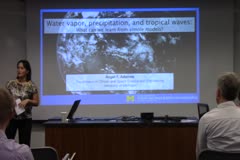
Water vapor, precipitation, and tropical waves: What can we learn from simple models?
May 03, 2019
Angel Adames-Corraliza, Visiting ATS from the University of Michigan
Hosted by Kristen Rasmussen
When it comes to our understanding of tropical motion systems and tropical precipitation, the last two decades have been characterized by fast advances. Yet our conceptual understanding of tropical motions remains incomplete. Here I present a conceptual framework that may provide insight into the nature of tropical motion systems and the mechanics of convective coupling. Scale analysis of…
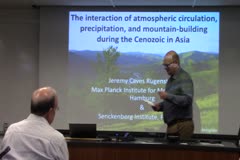
The interaction of atmospheric circulation, precipitation, and mountain-building during the Cenozoic in Asia
April 29, 2019
Jeremy K. Caves Rugenstein, Visiting from the Senckenberg Institute, Frankfurt
Hosted by Jeff Collett
Modern climate in Asia is characterized by large-scale monsoonal circulation over India and southern China and vast, exceptionally arid deserts across much of Central Asia. This same area contains some of the highest mountains in the world, including the Himalayas and Tibetan Plateau, the Tian Shan, and the Altai. How and when this topography influenced climate over the Cenozoic Era (past 65…
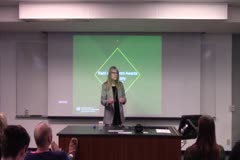
Herbert Riehl Memorial Award and Alumni Award Presentation
April 19, 2019
Ben Trabing and Kai-Chih Tseng
Hosted by Sue van den Heever
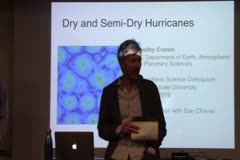
Dry and Semi-Dry Hurricanes
March 29, 2019
Tim Cronin, Visiting ATS from the Massachusetts Institute of Technology
Hosted by Dave Thompson
It is widely believed that tropical cyclones are an intrinsically moist phenomenon - requiring evaporation and latent heat release in cumulus convection. Recent numerical modeling work by Mrowiec et al (2011), however, found formation of axisymmetric dry tropical cyclones in dry radiative-convective equilibrium (RCE) - raising many questions. What can such vortices teach us about intensity,…
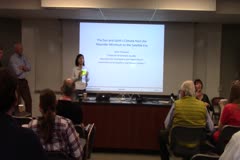
The Sun and Earth's climate from the Maunder Minimum to the satellite era
March 08, 2019
Peter Pilewskie, Visiting ATS from the University of Colorado Boulder
Hosted by Tom Vonder Haar and Christine Chiu
Radiative energy from the Sun establishes the basic climate of the Earth's surface and atmosphere and defines the terrestrial environment that supports all life on the planet. Solar radiation, nearly four orders of magnitude larger than all other external sources of energy, fuels atmospheric dynamics and chemistry along with photosynthetic processes in the biosphere, and drives interactions…
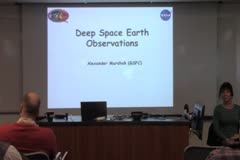
Deep Space Earth Observations
March 01, 2019
Alexander Marshak, Visiting ATS from the NASA Goddard Space Flight Center
Hosted by Christine Chiu
The Deep Space Climate Observatory (DSCOVR) was launched on 11 February 2015 to a sun–Earth first Lagrange point (L1) orbit, approximately 1 million miles from Earth toward the sun. The Earth Polychromatic Imaging Camera (EPIC) onboard DSCOVR is one of the two Earth-facing science instruments; EPIC delivers nearly hourly observations of the entire sunlit face of the Earth. We discuss the…
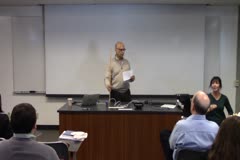
Relationships between molecular composition change and organic aerosol optical properties
February 15, 2019
Yinon Rudich, Visiting ATS from the Weizmann Institute of Science
Hosted by A.R. Ravishankara
The wavelength-dependence of the complex refractive indices (RI) in the visible spectral range of secondary organic aerosols (SOA) and of biomass burning aerosol, and the evolution of the RI with atmospheric aging are largely unknown. In this study, we apply a novel white light-broadband cavity enhanced spectroscopy to measure the changes in the RI (365−650 nm) of biogenic and anthropogenic…
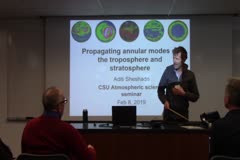
Propagating annular modes of the troposphere and stratosphere
February 08, 2019
Aditi Sheshadri, Visiting ATS from Stanford University
Hosted by David Thompson
The two leading Empirical Orthogonal Functions (EOFs) of zonal mean zonal wind describe north-south fluctuations, and intensification and narrowing, respectively, of the midlatitude jet. Under certain circumstances, these two leading EOFs cannot be regarded as independent, but are in fact, manifestations of a single, coupled, underlying mode of the dynamical system describing the evolution in…
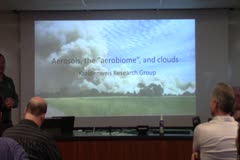
ATS Faculty Jamboree
February 01, 2019
ATS Faculty
Hosted by Michael Bell
ATS faculty will give short overviews of their research. Professors who will speak and their topics are as follows: University Distinguished Professor Sonia Kreidenweis Aerosols, the “aerobiome,” and clouds Assistant Professor Kristen Rasmussen Mesoscale meteorology and regional climate modeling Professor Peter Jan van Leeuwen Nonlinear data assimilation and causality…
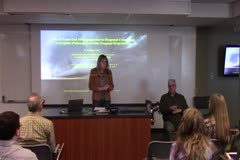
Use of Trace Gas Measurements to Quantify Convective Transport Time Scales and Pathways
January 25, 2019
Z. Johnny Luo, Visiting ATS from the City University of New York
Hosted by Sue van den Heever
Convective transport from the marine boundary layer (MBL) to the upper troposphere (UT) is investigated using airborne in situ measurements of chemical species over the tropical western Pacific (TWP). Using 42 trace gas species with photochemical lifetimes ranging from shorter than a day to multiple decades, we derive a transit time spectrum G(t) and the associated modal and mean transit times…
